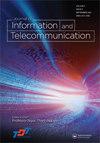A survey on spatial, temporal, and spatio-temporal database research and an original example of relevant applications using SQL ecosystem and deep learning
IF 1.7
Q2 COMPUTER SCIENCE, INFORMATION SYSTEMS
Journal of Information and Telecommunication
Pub Date : 2020-09-17
DOI:10.1080/24751839.2020.1774153
引用次数: 6
Abstract
ABSTRACT Spatio-temporal data serves as a foundation for most location-based applications nowadays. To handle spatio-temporal data, an appropriate methodology needs to be properly followed, in which space and time dimensions of data must be taken into account ‘altogether’ – unlike spatial (or temporal) data management tools which consider space (or time) separately and assumes no dependency on one another. In this paper, we conducted a survey on spatial, temporal, and spatio-temporal database research. Additionally, to use an original example to illustrate how today’s technologies can be used to handle spatio-temporal data and applications, we categorize the current technologies into two groups: (1) traditional, mainstay tools (e.g. SQL ecosystem) and (2) emerging, data-intensive tools (e.g. deep learning). Specifically, in the first group, we use our spatio-temporal application based on SQL system, ‘hydrological rainstorm analysis’, as an original example showing how analysis and mining tasks can be performed on the conceptual storm stored in a spatio-temporal RDB. In the second group, we use our spatio-temporal application based on deep learning, ‘users’ future locations prediction based on historical trajectory GPS data using hyper optimized ANNs and LSTMs’, as an original example showing how deep learning models can be applied to spatio-temporal data.空间、时间和时空数据库的研究概况,以及使用SQL生态系统和深度学习的相关应用的原始示例
时空数据是当今大多数基于位置的应用程序的基础。要处理时空数据,需要适当地遵循一种适当的方法,其中必须“全面”考虑数据的空间和时间维度,而不像空间(或时间)数据管理工具单独考虑空间(或时间)并假定彼此不依赖。本文对空间、时间和时空数据库的研究进行了综述。此外,为了用一个原始的例子来说明当今的技术如何用于处理时空数据和应用程序,我们将当前的技术分为两组:(1)传统的主流工具(例如SQL生态系统)和(2)新兴的数据密集型工具(例如深度学习)。具体而言,在第一组中,我们使用基于SQL系统的时空应用程序“水文暴雨分析”作为原始示例,展示了如何对存储在时空RDB中的概念风暴执行分析和挖掘任务。在第二组中,我们使用基于深度学习的时空应用,使用超优化神经网络和lstm作为原始示例,展示了深度学习模型如何应用于时空数据,基于历史轨迹GPS数据的“用户未来位置预测”。
本文章由计算机程序翻译,如有差异,请以英文原文为准。
求助全文
约1分钟内获得全文
求助全文
来源期刊
CiteScore
7.50
自引率
0.00%
发文量
18
审稿时长
27 weeks

 求助内容:
求助内容: 应助结果提醒方式:
应助结果提醒方式:


